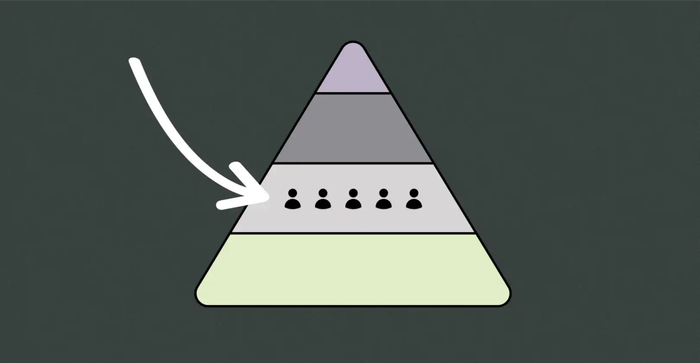There's no single sales methodology that will deliver in all circumstances.
Forward-thinking sales managers and their executives need to consider different sales techniques depending on their sector and target market.
For example, the best sales techniques for B2B companies will rarely be ideal when selling to consumers.
In sales, success relies on adapting your methods to earn the best results. That's why understanding even the basics of each sales technique is so useful.
Steve Ledgerwood - Capsule CEO
“A one-size-fits-all approach won’t get you the deals you need. To be successful in sales you need to select the right technique for the right customer at the right time.
Different buyers have different needs, pain points,emai and decision-making processes. Top-performing salespeople adapt their methods to match their audience. By mastering multiple sales techniques and applying them strategically you maximize your chances of building trust demonstrating value and ultimately closing more deals.”
With a better understanding of different sales techniques, you'll be better placed to identify and apply the right method for the situation at hand.
Learn more about different sales techniques that just work.
1. The Challenger sale: Win more deals
The challenger sale method, characterized by taking control of the selling process, is the best sales technique to ramp up the volume of closed deals. Particularly effective when customers consider themselves too preoccupied to build a relationship, this method has been proven successful in many B2B organizations.
It involves following a three-part strategy.
Teach the customer
Offer fresh, educational insights to engage savvy customers. The challenger sale method educates prospects about new solutions, revealing needs they might not have thought of themselves. The method relies on encouraging the customer to adopt a game-changing perspective. Demonstrate innovative products or services to show the prospect what they haven't had time to research independently.
Tailor the solution
You'll meet different personalities as your sale progresses from your initial contact toward the decision-maker. Each person will demand a different strategy, meaning you must have a contact management process organized. Align your messages with the company's ethos and the wider goals and concerns of each prospect. Explore their websites and corporate literature so you can mirror their culture effectively.
Guide your prospect
To seal a deal, aim at your ultimate goal doggedly but don’t be too aggressive. Engage decision-makers and influencers alike. If there's resistance, the challenger sale technique involves pivoting seamlessly from cost to value, pushing your customer to think differently and engage with your proposition.
To get the challenger sale method right:
- Plan each conversation before it happens so you know how and when to steer it towards your end goal
- Remember that each conversation is an exchange of views and you should be practicing active listening
- Be prepared to walk away from a deal if the transaction isn’t right for all parties.
2. MEDDIC sales: Qualify prospects with precision
The MEDDIC sales methodology helps B2B businesses structure qualifying leads effectively. Developed in the 1990s, MEDDIC focuses on determining whether a potential customer is worth pursuing, helping sales teams to invest their efforts where they’ll have the highest impact.
The acronym MEDDIC stands for:
- Metrics: Identify the quantifiable gains your prospect wants, such as revenue growth or cost reduction, and position your solution accordingly
- Economic buyer: Pinpoint the person who has the final say on purchasing decisions and tailor your pitch to their priorities
- Decision criteria: Understand the key factors the company considers when choosing a solution (e.g., budget, integration, ease of use).
- Decision process: Learn the steps involved in finalizing a purchase, including timelines and internal approvals, to avoid delays.
- Identify pain: Pin down the company’s challenges and show how your solution directly addresses their specific pain points
- Champion: Find an internal advocate who benefits from your solution and can push for its adoption within the organization.
By ensuring that prospects meet these six criteria, sales teams can streamline their efforts and avoid chasing unqualified leads helping them to close deals confidently. MEDDIC is especially useful for complex, high-value B2B sales, where long decision cycles and multiple stakeholders make qualification crucial.
How to effectively implement MEDDIC:
- Conduct in-depth research to understand your prospect’s goals before reaching out
- Engage with key decision-makers early in the process
- Align your solution’s value with the company’s specific pain points and decision criteria
- Work closely with internal champions to drive the deal forward.
With MEDDIC, your sales team can focus on the right opportunities, leading to better conversion rates, higher revenue, and more predictable forecasting.
3. Inbound Sales: Aligning Your Process with the Buyer’s Journey
The inbound Sales Methodology offers a customer-centric approach that prioritizes understanding and solving buyer pain points. Unlike traditional, outbound-focused sales, inbound sales reps focus on engaging active buyers, personalizing their approach, and building trust throughout the sales process.
This method helps teams qualify leads, personalize engagement, and close deals more effectively by aligning with how buyers naturally make purchasing decisions. It’s great for B2B sales, where longer decision cycles and complex needs require a more consultative approach.
By shifting from a sales-first to a buyer-first mindset, inbound sales teams create stronger relationships, increase conversion rates, and drive long-term customer loyalty.
Harry Thomson - Global Account Executive
"The Inbound Sales methodology helps us prioritize engaged buyers and qualify leads effectively. This ensures we focus on the right prospects, personalize our approach, and guide buyers through a structured decision-making process leading to stronger conversions and better customer relationships."
Inbound sales follow three key stages of the buyer’s journey:
- Awareness – The buyer realizes they have a challenge or need they must address
- Consideration – The buyer actively researches solutions and compares their options
- Decision – The buyer selects the best-fit solution and moves forward with a purchase
While buyers progress through these three stages, sales teams follow four actions to nurture leads effectively:
- Identify: Prioritize leads who actively searching for solutions, ensuring your sales efforts focus on the right prospects
- Connect: Engage leads with personalized messaging to help them decide whether their challenge is urgent enough to address
- Explore: Dig deeper into the buyer’s needs and compare your offering with competitors to communicate your value proposition
- Advise: Position your solution as the best-fit option by addressing the buyer’s specific pain points and demonstrating clear benefits.
4. Solution selling: Fulfill customers' needs
This is the best sales technique if the customer has indicated they're looking for a long-term relationship. Like all of the best sales techniques, it can be deployed in numerous scenarios. However, it's particularly useful when a customer knows they have a need but no idea how to meet that requirement.
There are six principles to follow in solution selling:
- Speak with the customer
- Listen to their needs and ask probing questions about their challenges
- Focus on their pain points and analyze them
- Tell the customer what their challenges are
- Suggest appropriate solutions to meet their needs
- Close the deal.
Step one - Before making initial contact, gather intel on the prospect. Understand their business. Know which competitors you might be up against. Anticipate the sort of questions you might be asked and then approach your prospect.
Step two – Progress with broad questions, then get more detail. For example, lead with a general question about a process the customer carries out and then focus on the problems they encounter when executing it. Doing this will help you to frame how your solution could overcome their issues.
Step three - Listen to what they say, and notice what they skip over. Non-verbal clues about their pain points matter and can sometimes be expressed by what's not said or from the tone of voice. Let them lead, but ask for clarifications to show you're really listening. Summarize their points to ensure clarity. Pay close attention to their commercial priorities.
Step four – Tell the customer what you've learned about their challenges, not your product. Showcase why you're there to assist rather than demonstrating your solution.
Step five - Suggest how certain aspects of their pain points could be overcome with the right solution. If they go quiet, remind them of the valuable insights you've gathered. Always prioritize their needs and indicate how your solution will offer improvements.
Step six – Close the deal, having qualified your prospects. Talk to the decision-maker who has the authority to make a purchasing decision. If they hesitate, highlight the risk of inaction.
To get the solution selling method right:
- Understand your customer's goals fully.
- Show how you can solve their problems in pursuit of their goals.
- Demonstrate how your solution satisfies their needs in the longer term and how your relationship with them will be beneficial moving forward.
5. SPIN Selling: Leverage the right questions
Among the best sales techniques for in-person sales, SPIN selling puts the customer in the driver's seat and lets them do the talking. Developed in the 1980s, the main idea of this sales technique is to avoid asking wrong or inappropriate questions that might put the prospect off. Instead, you allow them to run the sales process.
SPIN selling involves deploying four types of open questions to help nudge the prospect toward closure. These are:
- Situation
- Problem
- Implication
- Need
Question one – Ask questions that will help you understand the challenges your prospect faces. If you want to find out what your prospect might be after, don't ask them whether they want to buy a house. Instead, inquire what sort of property they see themselves living in. In a B2B environment, ask what the purchasing process is — not who's in charge of procurement decisions.
Question two – When you’ve got a better understanding of their situation, ask questions that help you focus on the customer's problems or pain points. This helps you figure out what products or services to suggest. Inquire about the biggest issue with their current service/solution or what problems their current supplier might cause them, for example.
Question three – Next, question your customer about the implications of their pain points. Deliberately ask them to focus on the negative sides of their problems. For example, ask what would happen if they failed to make changes to their solution or what might happen if their supplier let them down in more than one way at the same time.
Question four – Having established how bad things might get, ask your customers what they truly need to make things better. This means rather than suggesting your solution's benefits, you're getting them to identify improvements.
To recap, to utilize the SPIN selling method:
- Ask open-ended questions, not closed ones
- Put questions to your prospect in the right order – don't jump to need before focusing on problems
- Avoid directly suggesting solutions and allow the customer to work out the answers for themselves.
Try Capsule CRM free for 14 days Get started
6. Account-based selling: Align sales and marketing activities
Also called ABS, account-based selling is a B2B selling method that aims to align marketing activities with sales work.

It's often the best sales technique for big deal sizes where additional service and attention are needed to help close the deal.
Account-based selling is typically reserved for:
- High-net-worth individuals
- Businesses that procure frequently with repeat orders
- High-value businesses which require a hands-on sales process
Note that account-based selling means appointing a dedicated sales team member to handle all the sales interactions between the customer and your firm. As a supplier, orders might be sent directly in, but the account manager should always have oversight for all orders. Their expertise in the customer's needs will be used to assess whether orders need to be prioritized, fit the client's true business needs, and have been ordered in sufficient quantities.
To get ABS right:
- Sales managers need sufficient executives to manage all their company accounts
- Sales development executives will need to hand over to appointed account managers at the appropriate time
- Marketing materials should be produced with specific customer accounts in mind
- To offer unique selling propositions (USPs), bespoke products and services should be developed for high-value accounts
To learn more, read this blog post.
7. Social selling: Unleash the power of social media
Social selling is most suited to B2C models. Just as effective in many B2B markets, social selling means using social media platforms to inform and influence prospects. Developed from direct marketing models that encouraged salespeople to leverage networks of family and friends to drive sales, social selling is the modern, digital version.

With social selling, businesses leverage their Twitter, Facebook, LinkedIn, or Instagram accounts to promote their products and services. Social selling is also widely used to announce promotions and offers to help drive sales. By building an online community of customers and prospects, you can quickly communicate whatever you want to market. However, this must be backed up with the ability to respond rapidly to online queries and suggestions.
Social selling is useful because:
- It's a cost-effective way to reach a large audience
- It helps sales reps develop genuine relationships with prospects
- It helps build credibility in tandem with reviews and testimonials.
Building a successful social selling strategy requires more than 'tweeting' a few posts. You'll also need to back it up by measuring your metrics to identify which posts obtain best responses. It's also a good idea to join online groups or forums to demonstrate how your business can overcome problems by showcasing effective solutions. Don't just stick to your own social media timelines.
To get social selling right:
- Sales managers should focus on quality content over quantity
- New posts and responses should be genuine and meaningful
- Businesses must commit the necessary resources, or they’ll find that social selling won’t make a difference.
8. Consultative selling: Provide advice to drive deals
In consultative selling, you'll offer prospects a consultation with the ultimate goal of converting them into a sale by using the opportunity to point out the benefits of your solution.

This method is one of the best sales techniques for selling professional services, but it also has other wide-ranging applications.
Adrian Mendoza - Global Account Executive
"A consultative sales approach is all about understanding the prospect’s challenges from the very first interaction.
By identifying pain points early, I can demonstrate how our software provides a solution, ensuring I only pursue the most valuable opportunities. With everything recorded in the CRM, I can make data-driven decisions on where to focus my efforts."
There are four steps you need to follow for a successful consultative selling strategy:
- Ask the right questions
- Ensure you listen to the responses actively
- Educate your prospect
- Offer an authentic solution.
Step one – During a consultation, ask open questions that’ll elicit a detailed response. Question what your prospect wants to achieve from the consultation or why they've asked for one, for example.
Step two – When listening to your prospect's response, pay close attention to their answers and seek clarifications to demonstrate you're taking on board what they're saying. Doing so will also help you to better understand their needs.
Step three – Tell your customer about similar clients you’ve helped in the past and how helped them overcome their pain points. Suggest a plan that can help them and point out whether this would help with any related issues.
Step four – With a general plan established, put together a proposal tailored to meet their specific needs. If you're offering a competitor solution, highlight the advantages of your product compared to the one currently in use.
To get the consultative selling method right:
- Provide a genuine consultation that weighs all the options fairly
- Spend time diagnosing your customer's pain points before suggesting remedies
- If no solution exists, say so, but feel free to offer products and services that might mitigate your client's problems.
9. Sales psychology: Utilize science for successful selling
Psychology is an intrinsic part of sales. This isn’t so much a tactic in its own right, more a complementary process you should consider to help you close more deals.
Utilize cognitive bias to your advantage
In psychology, cognitive biases affect everything from memory and behavior to judgment and decision-making. By getting to know the potential biases of your prospects, such as why they think their current solution must be better than anything you could offer, you'll find ways to break down barriers between you and your customers.
Leverage FOMO to close deals
Fear of missing out (FOMO) is a widely accepted psychological theory that's part of what makes humans social beings. For example, explaining to customers that they might miss out on time-limited deals or remaining stock can drive them toward a purchasing decision.
Build credibility through expertise
The more authoritative you are in the eyes of your clients, the more likely they'll buy from you. Use your industry or personal experience to demonstrate you’ve got knowledge your prospect can benefit from. This psychological aspect of selling comes down to presenting yourself as an authority.
To utilize the psychological components of sales you should consider:
- Empathize with your prospects and try to see things from their perspective
- Be consistent and respond rapidly to any of their concerns
- Work on the first impressions you create because remember - first impressions count!
- Find out what underpins your customers' goals so you can find ways of addressing them meaningfully.
10 bonus sales techniques
In addition to the primary sales methods discussed, several bonus techniques can enhance your sales strategy. These techniques can be incorporated into the main methods to provide a more nuanced approach, tailored to specific customer needs and situations.
Utilizing these additional strategies can help you optimize your efforts and achieve better results throughout the sales process.
1. Visual aids: Enhance understanding
Visual aids, such as charts, graphs, or product demos, can make your pitch more engaging and easier to understand. These help illustrate your points clearly, making it easier for potential customers to grasp complex information about your product or service.
For example, you could show a graph illustrating the cost savings your software solution provides compared to your competitors.
2. The personal touch: Build relationships
Adding a personal touch, such as remembering and mentioning personal details about your potential client, can build stronger relationships. Showing genuine interest in their business and their personal life can help you build rapport.
For instance, recalling a detail about their recent project or personal interest during a sales call can make the conversation that little bit more memorable.
3. Mirroring
Mirroring involves subtly copying your prospect's body language, tone, and speech patterns to build rapport. Many salespeople find this technique effective because people tend to feel more comfortable and connected with others who are saying similar things to them.
For example, if a potential customer speaks slowly and calmly, matching their pace and tone during phone calls creates trust and understanding.
4. Priming: Influence decisions
Priming involves subtly suggesting certain ideas or themes to influence the prospect's decision-making process. Mentioning specific benefits early in the conversation can shape their perception.
For example, discussing the reliability of your product at the start of your sales call can prime prospects to view your solution as dependable throughout the sales approach.
5. Bundling: Increase perceived value
Bundling multiple products or services at a discounted rate can make your offer more attractive. It’s one of the best sales tips to increase the perceived value of the purchase, as potential customers feel they’re getting more for their money.
For example, providing a software solution including free training and support can make the overall deal more appealing and make more sense for the buyer.
6. Follow-up: maintain engagement
Consistent follow-up with prospects ensures that your product or service remains top-of-mind. Regular check-ins show you’re committed to helping them find the best solution.
For instance, sending a follow-up email with additional resources or answers to their questions can keep the conversation going and demonstrate your dedication. This keeps your sales pipeline active – and moving forward.
7. Competitive analysis: highlight advantages
Conducting a competitive analysis allows you to highlight the unique advantages of your product or service over others in the market. Knowing your competitors' strengths and weaknesses can help you position your offering better versus your competition.
For example, if your software solution has features that a competitor lacks, emphasizing these can make your product stand out and align with sales techniques backed by solid research.
8. Limited-time offers: Drive action
Limited-time offers create urgency, prompting prospects to act quickly to take advantage of the deal. Highlighting these offers can accelerate decision-making and close deals faster.
For instance, offering a discount that expires at the end of the month can encourage prospects to finalize their purchase to benefit from any potential savings. This technique can lead to more sales and helps decision-makers move away from the status quo towards a purchase decision.
Incorporating these bonus sales techniques into your overall sales approach can result in deeper conversations with potential customers – ensuring that everyone is on the same page.
9. Storytelling: Create an emotional connection throughout the whole sales process
Storytelling is a powerful sales strategy that can help create an emotional bond with prospects by allowing them to step into the customer’s shoes. Crafting compelling stories around real-life use cases, customer successes, or even hypothetical situations can help your sales team convey how your product can solve problems or address specific needs.
Some examples:
- Leverage user persona stories. Create a story around a fictional persona that closely resembles your ideal customer. For instance, you could talk about “Dan,” a marketing director at a mid-sized tech company struggling to keep up with content production demands. Illustrate how she discovered your product. Your prospects can better understand how your solution could benefit them if you weave a relatable character into your story.
- Share a case study where a client faced challenges before using your product. Illustrate their initial struggles, what prompted them to seek a solution, and how your product turned things around. For example, you could describe how a small eCommerce company didn’t know how to scale operations and turned to you for assistance. Show a lot of numbers. It would be rather difficult for any potential client to ignore these results when making a business decision about using your services.
- During demos, create a hypothetical but relatable scenario that mirrors the prospect’s current situation. You can use this especially if you do not yet have a real case study to show. Describe a fictitious company facing similar hurdles, such as handling a sudden influx of data that overwhelms their current system. Then, show how your solution simplifies their workflow.
This approach helps prospects visualize how your product can fit into their operations and motivates them to move beyond the status quo.
10. Social proof: Build credibility and track performance
Social proof is a sales strategy that involves showcasing testimonials, case studies, or customer reviews to build credibility. This technique helps your sales team highlight how others have benefited from your product, making it easier for prospects to trust your offering throughout the whole sales process.
Videos work wonders here. Share short video testimonials from satisfied customers during sales calls or presentations. For instance, a testimonial from a CTO explaining how your solution helped them grow can create a strong impression. Prospects seeing a peer's firsthand account of success are more likely to view your product as credible and effective.
Also, you can add social proof to many of the marketing formats you've already been using. When following up with prospects via email, include success stories or reviews from customers in the same industry or facing similar challenges. For example, if you're selling to a healthcare provider, share a quote from a clinic that successfully used your software to reduce patient wait times by 30%.
Start using the right sales methodology today
Now that you have the basics of the best sales techniques, why not start putting them into action? A key part of effectively deploying any sales techniques can be complemented by a CRM.
Learn more about Capsule CRM to help improve your sales process and try our 14-day free trial.
Sales Techniques FAQ
Effective techniques for engaging new leads include understanding the prospect's situation, making a well-informed initial call, and using a sales pitch that resonates with the buyer's perspective and needs.
Sales training can significantly improve a salesperson's skills in areas like customer research, understanding body language, and developing a compelling sales pitch, all of which are crucial in the decision-making process of a buyer.
Customer research is vital in the sales cycle as it helps in understanding the prospect's needs, business goals, and challenges, enabling salespeople to tailor their approach and sales strategy effectively.
The sales funnel is a key concept in selling techniques as it outlines the journey from initial contact to the final purchase decision, helping sales teams to structure their sales activities and focus on moving prospects through each stage.
For existing customers, effective sales techniques include providing personalized service, regular follow-ups, and understanding their evolving needs to offer solutions that add unique value.
Understanding the buyer's perspective allows salespeople to empathize with the customer, address their specific concerns, and align the product or service with their needs, thereby capturing the prospect's attention more effectively.
Top techniques for sales presentations include being well informed about the product and the prospect's needs, using engaging visuals, and presenting a clear narrative that highlights the unique value of the offering.
Effective use of body language and verbal cues in a sales pitch involves maintaining eye contact, using positive gestures, and modulating voice tone to engage the buyer's attention and convey confidence.
The initial call is crucial in the sales process as it sets the tone for the relationship. It's an opportunity to gauge the prospect's interest, challenge the status quo, and establish a connection.
Sales teams can use feedback from customers and prospects to refine their sales techniques, making adjustments to better meet customer needs and improve the overall effectiveness of their sales strategy.




